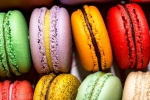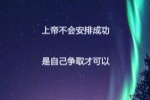
高考英语作文邀请类模板【一】
信件如果有附件,可在信纸的左下角,注上encl:或enc:,例如:encl:2 photos(内附两张照片)。如果福建附件不止一项,应写成encl:或encs。
我们有时可看到在称呼与正文之间有re:或subject:(事由)字样。一般在信纸的中间,也可与“称呼”对齐。还应在底下加横线,以引起读信人的注意,使收信人便于在读信之前就可了解信中的主要内容。事由一般在公务信函中使用,也可以省略。
高考英语作文邀请类模板【二】
Jiefang Road
Oct. 16, 2003
Dear Mike,
I'm going to the cinema next Sunday morning to see “ A Dream of Red ” , and I have two tickets. Would you like to come?
The film starts at 9:00. Maybe we can meet at the gateway of the department store and have breakfast before the film starts.
Please give me a call if you can come. I'm at home in the evening.
Looking forward to seeing you.
Love,
Li Lei
高考英语作文邀请类模板【三】
一封信写完了,突然又想起遗漏的事情,这时用p.s.表示,再写上遗漏的话即可,要长话短说。通常在信末签名下面几行的左方,应于正文齐头。
注意:在正式的信函中,应避免使用附言。
高考英语作文邀请类模板【四】
低于结束语一至二行,从信纸中间偏右的地方开始,在结束语的正下方,在签完名字的下面还要有用打字机打出的名字,以便识别。职务、职称可打在名字的下面。当然,写给亲朋好友的信,就不必再打了。
高考英语作文邀请类模板【五】
Dear Professor Wang,
亲爱的王老师:
On behalf of the Student Union of the English Department, I'm writing to invite you to give us a speech on Chinese History.
我代表学生会和英语角写信给你邀请你给我们做一个关于中国历史的`演讲。
We're going to have such a speech at 2:30 p.m. this Tuesday afternoon in the Meeting Room 401. It would be great honor if you can join in our activity
我们打算在401会议室星期二下午2:30开这个演讲。如果你能来参加我们的活动将是我们莫大的荣幸
Please inform us whether you could come. We're looking forward to favorable answer.
请告知我们你是否会来。我们期待肯定的答复
Sincerely yours,
Jimmy
吉米

















